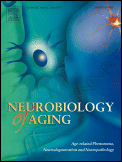
NEUROBIOLOGY OF AGING
Scope & Guideline
Illuminating the Pathways of Aging and Brain Health
Introduction
Aims and Scopes
- Neurodegenerative Disease Mechanisms:
Research on the biological and neurological underpinnings of neurodegenerative diseases, particularly Alzheimer’s and Parkinson’s disease, including genetic, molecular, and cellular mechanisms. - Cognitive Aging:
Exploration of the cognitive decline associated with aging, including studies on memory, attention, and executive function across different age groups. - Neuroimaging and Biomarkers:
Utilization of advanced neuroimaging techniques and biomarkers to study brain structure and function in aging populations, focusing on identifying early signs of neurodegeneration. - Role of Lifestyle Factors:
Investigating how lifestyle choices, such as physical activity, diet, and cognitive engagement, influence brain health and cognitive resilience in aging. - Neuroinflammation and Aging:
Study of the role of neuroinflammation in the aging brain and its contribution to cognitive decline and neurodegenerative processes. - Sex and Gender Differences:
Examination of how biological sex and gender differences influence aging processes, neurodegeneration, and cognitive outcomes.
Trending and Emerging
- Multimodal Approaches:
An increasing number of studies are utilizing multimodal research designs, combining neuroimaging, genetic analysis, and cognitive assessments to provide a comprehensive understanding of aging. - Precision Medicine and Genetics:
There is a growing emphasis on genetic risk factors and personalized medicine approaches in understanding Alzheimer's disease and other neurodegenerative conditions. - Impact of Lifestyle on Brain Health:
Research is increasingly focusing on how lifestyle factors, such as diet, exercise, and cognitive engagement, can mitigate cognitive decline and promote brain health. - Neuroinflammation as a Therapeutic Target:
The role of neuroinflammation in aging and neurodegeneration is gaining traction, with studies exploring potential therapeutic interventions to modulate inflammatory processes. - Cognitive Reserve and Resilience:
Emerging interest in cognitive reserve and resilience mechanisms, examining how individuals can maintain cognitive function despite neurobiological changes associated with aging.
Declining or Waning
- Animal Models of Aging:
There appears to be a decline in the number of studies focusing on aging in specific animal models, such as rodents, as researchers increasingly prioritize human studies and translational research. - Pharmacological Interventions:
Research centered on pharmacological treatments for cognitive decline and neurodegenerative diseases has decreased, possibly due to a shift towards lifestyle and non-pharmacological interventions. - Epidemiological Studies:
There is a waning emphasis on large-scale epidemiological studies in favor of more mechanistic and experimental approaches that delve deeper into specific biological processes.
Similar Journals

npj Aging
Advancing knowledge on the complexities of aging.npj Aging, published by Nature Publishing Group, is a pioneering journal dedicated to advancing our understanding of the biological, clinical, and social aspects of aging. With an E-ISSN of 2731-6068, this open-access journal aims to foster innovative research and interdisciplinary dialogue among scientists, clinicians, and policy-makers. As of its inception in 2023, the journal has quickly established itself within the scholarly community, ranking 15th in Medicine (Geriatrics and Gerontology) and 12th in Biochemistry, Genetics, and Molecular Biology focusing on Aging, reflecting a strong percentile standing in both categories. The journal provides a platform for disseminating important findings that address the complexities of aging, ensuring accessibility for a broader audience. Located at the Macmillan Building, 4 Crinan St, London, England, npj Aging aspires to be an essential resource for those seeking to enhance their understanding and contribute to the field of gerontology.
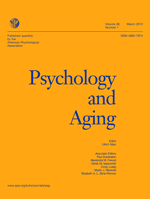
PSYCHOLOGY AND AGING
Transforming insights into aging through psychological research.Psychology and Aging, published by the American Psychological Association, is a premier journal dedicated to advancing the field of psychology as it relates to aging. ISSN 0882-7974 and E-ISSN 1939-1498, this esteemed journal has been a key resource since its inception in 1986 and continues to shape the discourse surrounding aging-related psychological phenomena. The journal boasts impressive rankings in various academic categories, placing in Q2 for Aging, Q1 for Geriatrics and Gerontology, and Q1 for Social Psychology in 2023, highlighting its significance in multiple disciplines. With Scopus rankings that position it within the top tier of psychology and medical journals, Psychology and Aging serves as a vital forum for researchers, professionals, and students alike, facilitating the exchange of rigorous empirical research and novel theoretical insights. This journal is instrumental in elucidating the complexities of psychological function across the lifespan, ultimately contributing to improved interventions and policies affecting older adults.
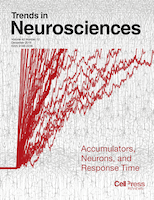
TRENDS IN NEUROSCIENCES
Leading the Charge in Neuroscience InnovationTRENDS IN NEUROSCIENCES, published by CELL PRESS, is a leading journal in the field of neuroscience, offering cutting-edge insights and important developments in the rapidly evolving landscape of brain research. With an impressive Impact Factor and ranking in the top quartile (Q1) of the category for Neuroscience (miscellaneous), it is positioned as a vital resource for researchers and professionals seeking to stay abreast of the latest discoveries and trends from 1978 to the present. Specifically ranked #3 out of 113 in General Neuroscience by Scopus, this journal promotes the interdisciplinary exchange of ideas and knowledge, making it an essential platform for students and experienced scholars alike. Although it is not an Open Access journal, its value lies in its rigorous peer-review process and commitment to maintaining the highest standards of academic integrity. By continuing to explore the complexities of neural processes and behavior, TRENDS IN NEUROSCIENCES plays a crucial role in shaping the future of neuroscience research and education.
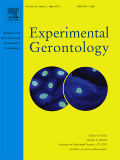
EXPERIMENTAL GERONTOLOGY
Illuminating the Pathways of Aging with Cutting-Edge ResearchEXPERIMENTAL GERONTOLOGY is a prestigious journal published by PERGAMON-ELSEVIER SCIENCE LTD, dedicated to the evolving field of aging research. With a rich history dating back to 1964 and continuing through 2024, this journal aims to advance the understanding of the biological processes underlying aging and develop interdisciplinary approaches to improve healthspan. ENCOMPASSING a broad scope, including *biochemistry*, *cell biology*, *endocrinology*, *genetics*, and *molecular biology*, it holds impressive rankings in the 2023 Scopus Ranks, featuring in Q1 and Q2 quartiles across multiple categories. This positions it as a vital resource for researchers and professionals focused on gerontology and related fields. As a subscription-based journal without open access, EXPERIMENTAL GERONTOLOGY ensures the dissemination of high-quality research through rigorous peer review, making it an essential publication for those aspiring to remain at the forefront of aging studies.

REJUVENATION RESEARCH
Exploring Innovative Pathways to RejuvenationRejuvenation Research is a premier journal dedicated to the advancing field of gerontology and aging research, published by Mary Ann Liebert, Inc. Established in 2000, the journal serves as a pivotal platform for the dissemination of scholarly articles that explore the complex mechanisms of aging and innovative approaches to rejuvenation. With an impact factor reflective of its robust scholarly contributions, the journal currently holds a Q4 ranking in Aging and a Q3 ranking in Geriatrics and Gerontology, showcasing its relevance in the academic community. This periodic publication, welcoming open access submissions, invites researchers, professionals, and students alike to engage with cutting-edge findings that could shape future geriatric practices and enhance quality of life. The journal underscores the importance of interdisciplinary collaboration, encouraging explorations that intersect with biochemistry, genetics, and other vital areas of study. Through its ongoing commitment to high-quality research, Rejuvenation Research remains a critical resource for understanding the biological underpinnings of aging and the strategies to mitigate its effects.

EXPERIMENTAL AGING RESEARCH
Exploring the Frontiers of Aging ResearchEXPERIMENTAL AGING RESEARCH, published by Taylor & Francis Inc., is a leading journal that has been at the forefront of aging research since its inception in 1975. With an ISSN of 0361-073X and an E-ISSN of 1096-4657, this journal has earned a notable reputation, including a Q3 ranking in the field of Aging and impressive Q1 and Q2 rankings in Arts and Humanities and Geriatrics and Gerontology respectively. This positions the journal within the top percentile of its category, highlighting its significant impact and contribution to the scientific community. Covering a broad scope that intersects various disciplines, EXPERIMENTAL AGING RESEARCH aims to disseminate pioneering research, foster interdisciplinary collaboration, and provide a platform for innovative studies that enhance understanding of the aging process. While it currently does not offer Open Access, researchers and academics can access its rich repository of knowledge that spans multiple facets of aging, from physiological changes to psychological impacts. As the field of aging continues to evolve, this journal remains an essential resource for researchers, professionals, and students dedicated to advancing knowledge and practices concerning aging and longevity.
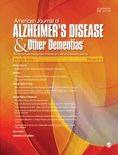
American Journal of Alzheimers Disease and Other Dementias
Pioneering research in dementia care and treatment.The American Journal of Alzheimer's Disease and Other Dementias, published by SAGE Publications Inc, is a pivotal resource for researchers, clinicians, and students engaged in the study of neurodegenerative diseases, particularly Alzheimer’s disease and various forms of dementia. With an impact factor reflecting its significance in the field, the journal boasts an open-access format since 2020, ensuring that groundbreaking research is accessible to a global audience. The journal holds prestigious Q2 rankings across several categories, including Clinical Psychology, Geriatrics and Gerontology, Neuroscience, and Psychiatry and Mental Health. Covering a wide spectrum from 1986 to 2024, it provides essential insights into innovative treatments, care strategies, and the latest findings in dementia research, solidifying its importance in fostering knowledge and advancing the field. With a commitment to high-quality scholarship, this journal is an indispensable tool for advancing understanding in the dynamic landscape of dementia studies.

BIOGERONTOLOGY
Advancing Understanding of Biological Aging ProcessesBIOGERONTOLOGY, published by SPRINGER, is a premier journal dedicated to the interdisciplinary study of biological aging processes and their implications for health and longevity. With an ISSN of 1389-5729 and an E-ISSN of 1573-6768, this journal features cutting-edge research that addresses critical questions in the fields of aging, geriatrics, and gerontology. Ranking impressively in the top quartiles, particularly as Q1 in Gerontology, BIOGERONTOLOGY is recognized for its contributions to advancing the understanding of aging at both molecular and systemic levels. The journal’s rich repository of scholarly articles provides valuable insights for researchers, healthcare professionals, and students alike, fostering a deeper comprehension of age-related biological mechanisms. Although not an open-access journal, it is highly regarded with an impact factor that reflects its significant role in the academic community. The journal spans from 2000 to 2024, ensuring a broad historical context for its studies, and is based in the Netherlands, with its administrative office located at One New York Plaza, Suite 4600, New York, NY 10004, United States. Engaging with BIOGERONTOLOGY means joining a global dialogue on the science of aging and the implications it holds for humanity.
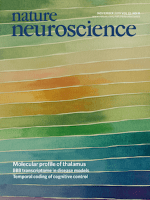
NATURE NEUROSCIENCE
Exploring Innovative Insights in NeuroscienceNATURE NEUROSCIENCE is a premier journal published by NATURE PORTFOLIO, focusing on cutting-edge research in the field of neuroscience. With an esteemed impact factor that reflects its significance in the academic community, this journal occupies an exceptional place in the 2023 Q1 category for neuroscience (miscellaneous) and boasts a leading Scopus rank of #1 out of 113 in general neuroscience, placing it within the top 1st percentile. Since its inception in 1998, NATURE NEUROSCIENCE has consistently delivered high-quality, peer-reviewed articles that contribute to our understanding of the nervous system, driving innovation and scholarship across disciplines. Although it does not offer open access, the journal remains a vital resource for researchers, professionals, and students seeking to stay at the forefront of neuroscientific discovery and discussion. Its editorial commitment to excellence ensures that it continually shapes the trajectory of neuroscience research well into 2024 and beyond, making it an indispensable asset for anyone passionate about the brain and its complexities.
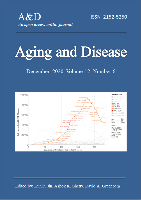
Aging and Disease
Exploring the intersection of longevity and health.Aging and Disease is a leading open-access journal published by the International Society on Aging and Disease, dedicated to advancing the understanding of aging and its associated diseases. Since its inception in 2010, the journal has established itself as a vital resource for researchers and practitioners in the fields of Geriatrics, Neurology, Cell Biology, and Pathology. With an impressive Q1 ranking across multiple categories and a robust position in Scopus rankings, including ranks in the top 3% in Geriatrics and Gerontology, it showcases high-quality research that addresses the complexities of aging processes. Each issue presents original articles, reviews, and insights aimed at improving health outcomes for the aging population. The open-access model ensures that valuable research findings are readily available to a global audience, fostering collaboration and innovation. As a go-to publication for scholars, healthcare professionals, and students, Aging and Disease significantly contributes to the multidisciplinary dialogue surrounding aging and its health implications.